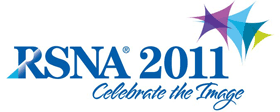
Abstract Archives of the RSNA, 2011
SSK14-09
Radiation Exposure to Patients and Staff during Pediatric Heart Catheterizations
Scientific Formal (Paper) Presentations
Presented on November 30, 2011
Presented as part of SSK14: Pediatrics (Radiation Dose Reduction)
Koos Geleijns PhD, Abstract Co-Author: Nothing to Disclose
Jurgen E.M. Mourik PhD, Presenter: Nothing to Disclose
Raoul M. S. Joemai, Abstract Co-Author: Research grant, Toshiba Corporation
Pediatric heart catheterization is frequently used for diagnostic examination and therapeutic intervention in patients with congenital heart disease. During these procedures children can be exposed to relatively high levels of radiation due to long fluoroscopy times, use of biplane X-ray units and prolonged cine imaging. Purpose of this study was to assess radiation exposure per procedure for individual patients and staff members during various types of pediatric heart catheterizations, including diagnostic procedures, radio frequency ablation, atrial septal defect closure, balloon dilatation and patent ductus arteriosus coil occlusion.
Dose-area product was measured during 69 consecutive heart catheterization procedures of children. Estimates of the entrance skin dose and effective dose were derived from the dose-area product. Individual effective dose was calculated taking into account both the actual imaging parameters and the physique of each child. Additionally, the individual dose equivalent, Hp(10), to staff was measured.
For the entire group of patients a mean dose-area product of 18 [range 1-138] Gy.cm2, a mean local entrance skin dose of 121 [range 2-944] mGy and a mean effective dose of 9 [range 2-44] mSv were found. Average conversion factors (cf) for calculation of effective dose from dose-area product can be derived from the slope of the graphs, being respectively cf = 1.4 mSv/Gy cm2 (0 – 2 yrs.), cf = 0.67 mSv/Gy cm2 (2 – 7 yrs.) and cf = 0.26 mSv/Gy cm2 (7 – 18 yrs.). Average occupational exposure was 12 [range 0-402] µSv per procedure.
Effective doses to patients during x-ray guided pediatric heart catheterization are amongst the highest encountered in medical imaging. The mean risk for development of a radiation induced fatal malignancy per procedure is approximately 1 in 700. Entrance skin doses did not exceed the threshold value of 2 Gy for development of skin damage. Estimated effective doses to staff are highest for pediatric cardiologists but remain far below the annual dose limits.
It is particularly important to evaluate radiation dose to children regularly, because of their relatively high susceptibility to radiation-induced malignancies.
Geleijns, K,
Mourik, J,
Joemai, R,
Radiation Exposure to Patients and Staff during Pediatric Heart Catheterizations. Radiological Society of North America 2011 Scientific Assembly and Annual Meeting, November 26 - December 2, 2011 ,Chicago IL.
http://archive.rsna.org/2011/11016489.html

